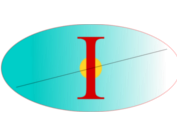Citation:

Abstract:
We consider an arbitrary quantum mechanical system, initially in its ground-state, exposed to a time-dependent electromagnetic pulse with a carrier frequency ω0 and a slowly varying envelope of finite duration. By working out a solution to the time-dependent Schrödinger equation in the high-ω0 limit, we find that, to the leading order in ω−10, a perfect self-cancellation of the system’s linear response occurs as the pulse switches off. Surprisingly, the system’s observables are, nonetheless, describable in terms of a combination of its linear density response function and nonlinear functions of the electric field. An analysis of a jellium slab and jellium sphere models reveals a very high surface sensitivity of the considered setup, producing a richer excitation spectrum than accessible within the conventional linear response regime. On this basis, we propose a new spectroscopic technique, which we provisionally name the Nonlinear High-Frequency Pulsed Spectroscopy (NLHFPS). Combining the advantages of the extraordinary surface sensitivity, the absence of constraints by the traditional dipole selection rules, and the clarity of theoretical interpretation utilizing the linear response time-dependent density functional theory, NLHFPS has a potential to evolve into a powerful characterization method for nanoscience and nanotechnology
Notes:
arXiv: 2101.09467



